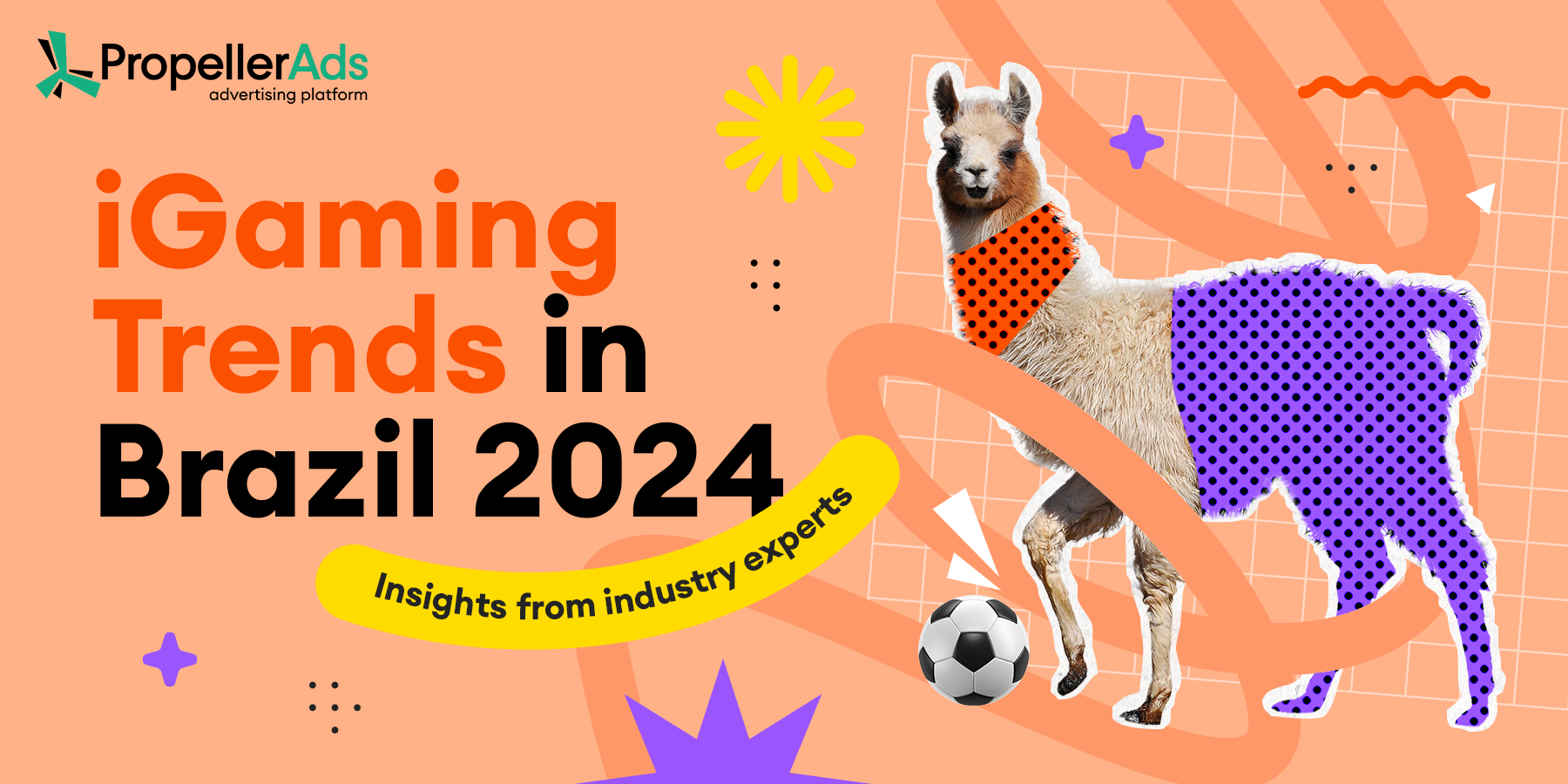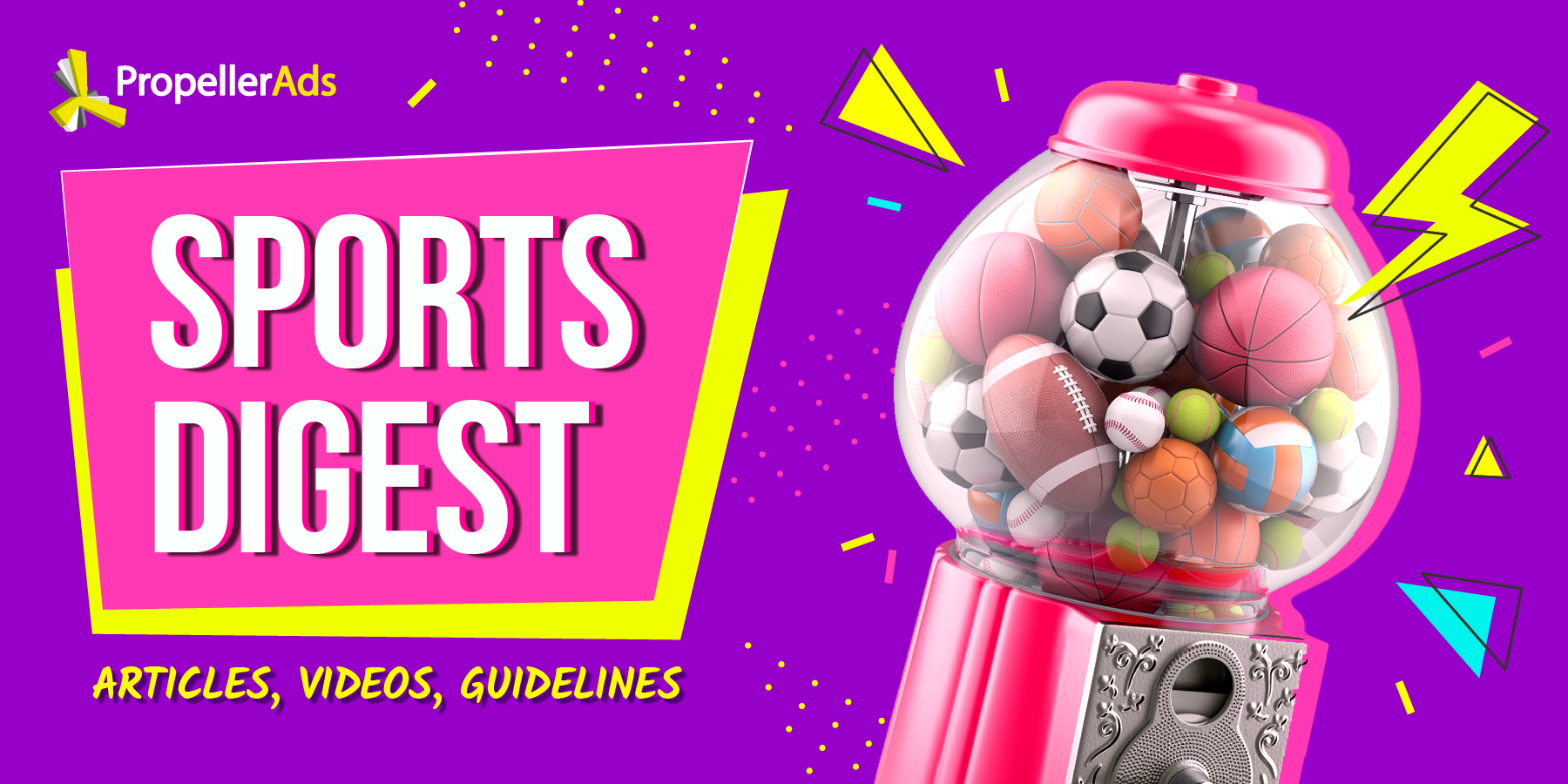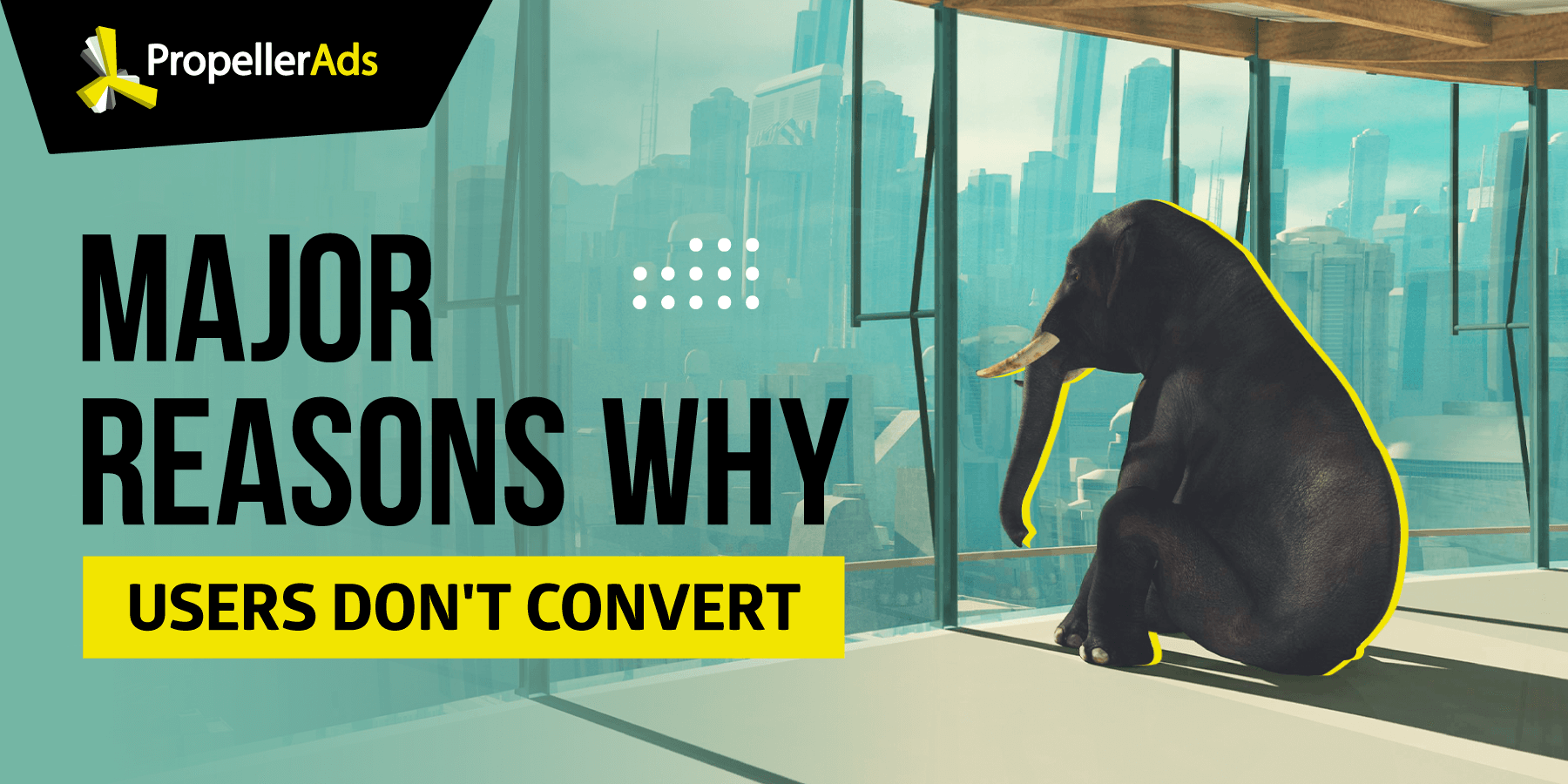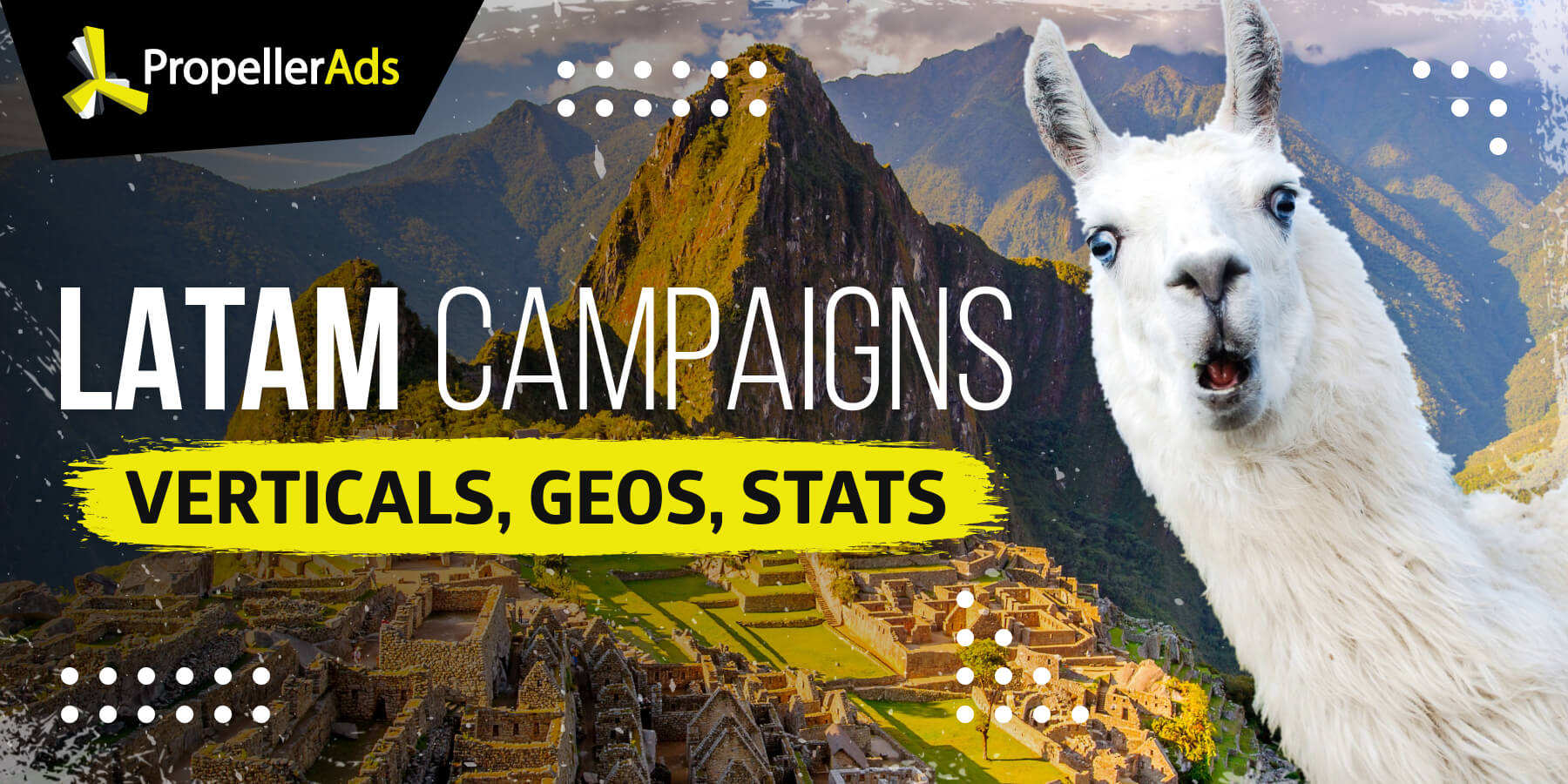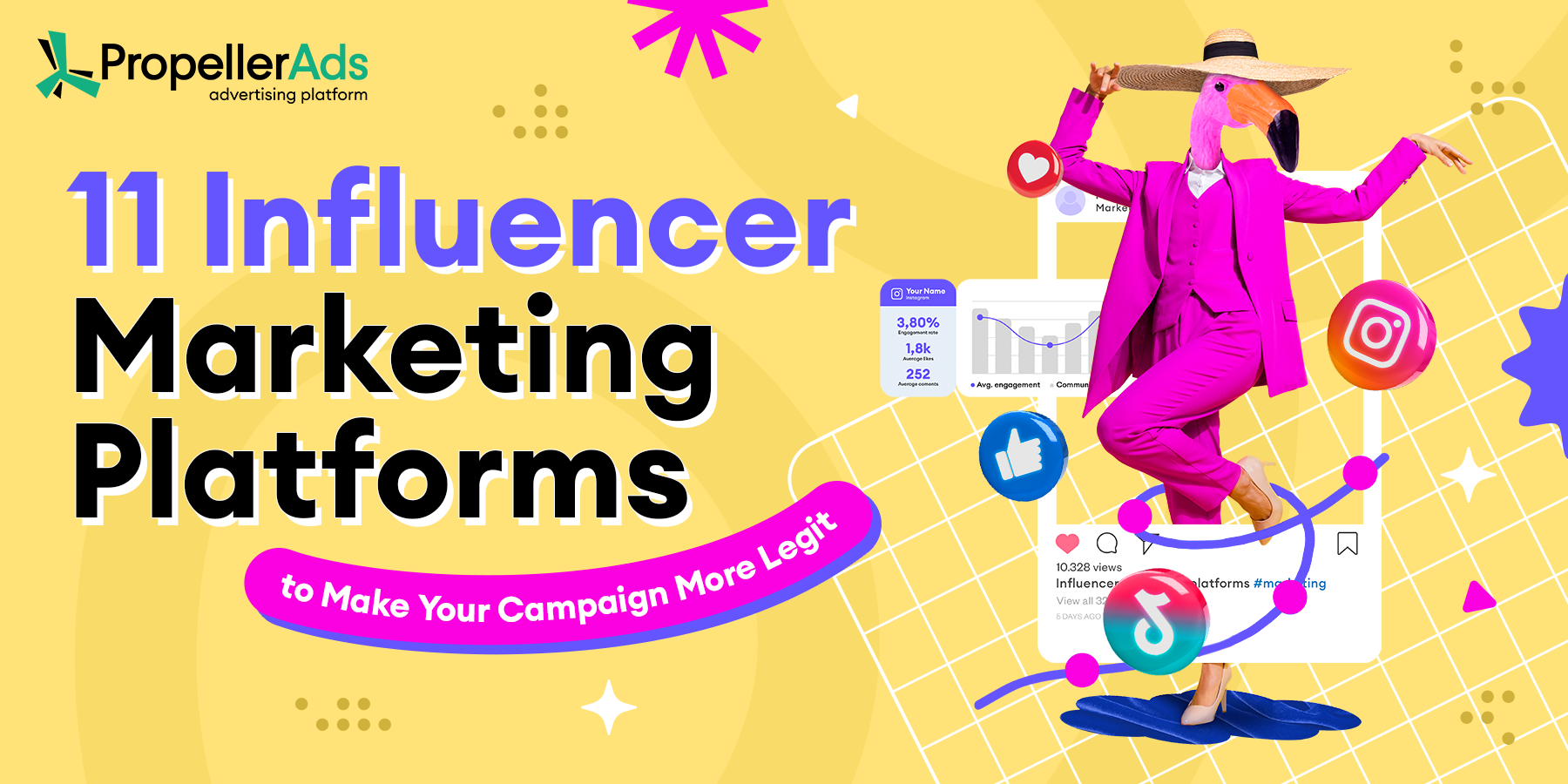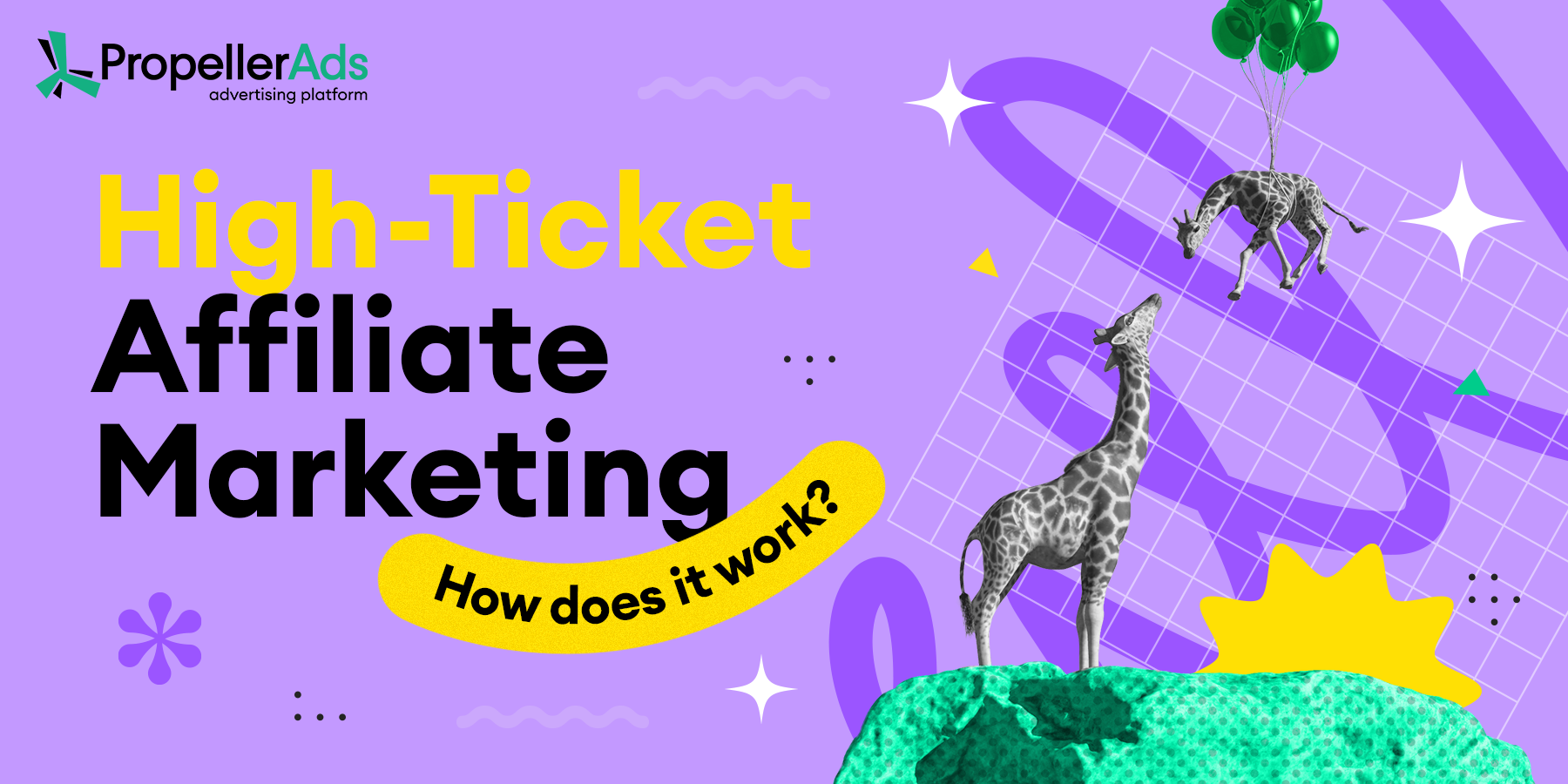The Most Popular iGaming Marketing Mistakes: Here’s How to Avoid Them

This post is also available in:
PT
ES
All brilliant minds claim mistakes are needed, even necessary as part of a learning process. And sure, we can agree with that. They can be educational, motivating, empowering even.
But making mistakes, in some businesses, means losing money, like literally.
Which basically means all those lessons can be flushed down the drain.
We have witnessed so many bad decisions being made by our fellow affiliates and media buyers when running a campaign within the iGaming vertical, and we decided to put a stop to it.
Here’s a guide on how not to repeat iGaming marketing mistakes marketers before you made (and some still continue to do so).
I. Think it through: The most crucial iGaming mistakes
Let’s start with some of the big ones – related only to this specific niche. We have professional media buyer Serge Abramov, and PropellerAds Sales Team Leader, Alex Shovkun, sharing insights they collected with years in this industry.
Sure, it’s way easier for affiliates to work on fixed commissions, especially if the advertiser is generous, as is the case in most Tier-1 countries where payment for deposit (as conversion) is over $100, often even $150. But, this is a one-time earning opportunity.
With the RevShare model (where advertisers are sharing a percentage of their revenue with affiliates), you can get a long-term income opportunity. Commissions here can vary. However, they are not limited only to initial conversion, but they cover all the upsells as well.
For example, if the iGaming platform profited around $800 the first month from a player you sent, and the RevShare is 25%, your earnings will be $200 instead of a $150 fixed commission. And that’s only the first month. As long as the platform continues to profit from this user, so will you.
Also, bear in mind this: When you work on fixed commission, the iGaming platform has its own prediction model that calculates what’s the acceptable payment for a deposit. Today it can be $150, but after some time it can drop down to $100 or even lower. And one of the factors that can lead to this decision is your traffic being lower quality than before.
Mistake #2: Investing less than three average payments in testing a slice
There used to be a rule – to see if the slice works or not, you should spend the sum of three payments on a lead. To test the slice and get relevant results. And we stand by it. Otherwise, it’s a risk moving on with a campaign not knowing if it will lead to the desired outcome.
This approach gives the most relevant estimations. If you don’t see the results after spending three rounds of payments on testing one set of Zone + GEO + OS + Creative, nothing will change for sure, and there’s no point in optimizing the campaign.
The problem here is that payments within this niche can be high (e.g., $150 for a deposit), and for most affiliates it’s a lot to invest $450 (3 x 150) on testing every slice.
To avoid losing that much money, while keeping all the strings in your hands, you could launch more reliable slices and offers only, and look at the intermediate metrics (registrations, pre-lander CTR, and bounce rate).
Mistake #3: Making it all about deposit
Before the main event – the user placing down a deposit, there’s a smaller event that occurs, and not all the affiliates count it as a win. We are talking about users registering on the platform.
Okay, no one will pay you for registration only. But if there are 0 registrations, there for sure won’t be depositing anytime soon. So, we suggest counting down all your wins and staying focused on intermediate results as well. Especially if you are just getting started in the iGaming niche.
Let’s say that every 10th user who registers on the platform will deposit (it would be good to calculate this ratio!). And let’s say you are starting with an unoptimized campaign, and not with a CPA but with registrations in focus. It would be okay to invest 3 x $15 (sum of $45) to test the slice on this parameter too. It can be very helpful, because once again – no registration, no deposit.
Also, if the ratio is too high, and you have reached 100 or 150 dollars and only one user registered, you should not hope for a deposit. This could happen with organic traffic, but even then, it’s not 1:1, but rather a 1:3 or 1:4 ratio (one of four registered users will deposit).
Mistake #4: Being misleading with creatives
Now, this is a fairly common scenario – where affiliates reach for deceiving tactics of promising what they cannot deliver, to lure users into converting (e.g., affiliates offering a $50 bonus on a second deposit to all the users who register and place the first one the same day – without really being able to fulfill a promise).
What usually occurs next in these scenarios is users bite the hook, register and deposit for the first time. And then nothing happens. No bonus, no promised award. The expected thing is for them not to return to this platform ever again.
Which is a huge problem for advertisers and the very reason they almost certainly won’t collaborate with you in the future.
Also, this type of affiliate behavior affects the reliability of the iGaming platform’s prediction models.
Mistake #5: Starting the campaign too early or too late
One of the biggest mistakes when running iGaming ads is the wrong assessment of time for the campaign kickstart. Affiliates often start too early, or again too late, and therefore miss the most valuable traffic and volumes.
This is especially important to bear in mind when launching a campaign tied to a specific sports event, like the Champions League Finals. According to our experience, the perfect time to start is 2-3 days before the match.
You should do it like this: Turn the first two days into a warm-up; do not push the biggest rates and the whole budget into it, and start displaying your ads. And then, on the day of the event, especially 12 hours before, go all in.
At this time, the competition is usually not that high (the beehive will start buzzing right before the match begins), but the number of users is becoming bigger and bigger. We suggest using this time to take more traffic for yourself.
If you’re working with PropellerAds, be aware of this: Our algorithm works on a real database. If you’re already in a rotation, it can help you get more traffic, even if someone else appears (the competitor). In this case, he will need to overbid you, which takes time, so it’s definitely better to be the first one on the slice.
Also, don’t come 10 minutes before the game begins – it can work, but you will spend more money, and the results might not be so good. And it would be absolutely wrong to come in the second half of the game with no warm-up and no nothing.
Mistake #6: Not being consistent with bonus promo
In case you are offering your users a certain benefit – let’s say a bonus, you should make sure you promote it every step of the way. If the user sees this offer on a creative, but not on a landing page, it could make them question whether the offer is real, legit, and even true.
This could lead to lower conversion rate – users could decide not to register and deposit.
You must be consistent with your offer throughout the funnel. If you are mentioning your bonus in push messages (either text or visual part) do it also on a landing. Every single time. And make sure to promote the exact same thing. You cannot display one bonus deal on an ad and then talk about the other one on landing.
Mistake #7: Using the wrong language within creatives
This one is more of a generic mistake – it happens in all niches, not only in iGaming. But it is super important to mention it because it can dramatically affect your CR and CTR.
You should not use ad creatives written in a language that’s not the official or spoken language of the country you are running your campaign on (for instance, ads in Portuguese for a campaign you run in Germany).
Why? Because it won’t engage the audience. It can even be considered a non-thoughtful approach to try to convert users by addressing them in a language they do not understand. So, the opposite of what you’re trying to achieve could happen – users could be rejected by being faced with ads in a foreign language.
Mistake #8: Miss to include CTA on landing page and making landings too stiff
What we noticed is that we have much higher CR on landing pages with CTA (Call To Action). For instance, if you offer some bonuses or promos on the lander, to users who register, chances are higher you will convert them on the spot if there is a CTA that leads to the registration page.
That + a playful approach to landing pages.
This is iGaming we are talking about, and a plain, blunt registration form won’t help you increase CR. What you need is to make the landing entertaining—add some spinning roulette, popping slots, or spinning a lucky wheel, make it a fun experience for users.


Mistake #9: Making the registration form long and complicated
What an advertiser wants is for a new user to deposit money and start utilizing their platform. And to get there, the user needs to fill out the registration form.
Don’t make it too complicated, this intermediate step! You want the users to convert as soon as possible, and by making the registration process overly complicated you could lose some potential conversions along the way.
Our suggestion is to make this a 2-step, instead of an 8-step journey. Ask users to leave only their names and email addresses, and later on, after they register, you can move on with the KYC (Know Your Customer) process.
II. The biggest of them all: The most common mistake in iGaming
Let’s move on with this listing by pointing out the stumbling stone for most affiliates – Fixation on targeting Tier 1 countries solely because of the promise of higher payouts. Commenting on this issue is Alexander Skrbo, an affiliate with 8 years of experience:
“It’s understandable to be drawn to regions with greater economic power, but there’s a lot more at play than just potential earnings. For instance, the cost of traffic tends to skyrocket in these regions, eating into profit margins faster than expected. Moreover, Tier 1 countries often come with stringent regulations and compliance requirements, such as Know Your Customer (KYC) and the necessity for local licenses as affiliates or regulatory compliance for the creatives”.
And let’s not forget the market saturation factor; people in these regions are more likely to have accounts on iGaming platforms already, making acquisition more challenging than in emerging markets.
“I’ve seen instances where affiliates (including myself) poured resources into campaigns targeting Tier 1 countries, only to find themselves struggling with exorbitant advertising costs and grappling with regulatory hurdles they hadn’t anticipated. It’s not uncommon to witness campaigns falling short of expectations due to overlooking these critical factors.”
Conversely, emerging markets like Africa, Latin America, and India present promising opportunities for affiliates. These regions boast rapidly growing Internet users, increasing disposable incomes, and an interest in iGaming. By tapping into these markets, affiliates can access a vast pool of untapped users and capitalize on the growing demand for iGaming services.
Advice: The key lies in diversification and testing. Rather than putting all their eggs in one basket, it’s essential for marketers to test different strategies, creatives, and offers across various demographics and regions. This approach not only mitigates risks but also increases the chances of uncovering lucrative opportunities. It’s like trying different recipes instead of always making the same dish. Also, it helps to talk to other people doing the same thing. By sharing what works and what doesn’t, everyone can learn faster.
Another thing that’s really helpful is having a good account manager on the traffic network’s site. They can guide you, give you advice, and help you navigate any problems you encounter. And remember to keep an eye on how things are going. You need to check if what you’re doing is working or if you need to change something. It’s like making sure your plants get enough water and sunlight to grow well.
Additionally, tracking and data analysis are key. As the saying goes, “You can’t optimize what you don’t measure.” By tracking performance metrics, affiliates and media buyers can identify areas for improvement and fine-tune their strategies accordingly.
III. Coming from media buyers: 3 core mistakes to eliminate
Our friends from Alfaleads wanted to share a few issues that cause most campaign headaches for affiliates and media buyers within the iGaming niche. Here are the top 3:
First: Limited knowledge of analytics systems
It’s surprising, but some affiliates still struggle with sub IDs, campaign parameters, and setting up post-backs. This leads to bad data and even worse decisions.
Second: Inadequate preparation before launching campaigns
Many skip the groundwork – proper targeting, audience segmentation, and making creatives – it’s a recipe for disaster. For example, campaign scheduling can lower your CPA by pausing or reducing bids during off-peak conversion times.
Third: Incorrect test budget
Even veterans fall victim to this. It’s especially tricky in new GEOs where cost-per-click (CPC) or install (CPI) is unknown, and product conversion rates are unclear.
This can lead to the following scenario: you pull the plug on testing too early after spending a small amount (like $100–150) because the results didn’t meet expectations. But, the market might have a high CPI, and you simply needed more traffic for a proper analysis, missing out on a potentially lucrative campaign flow.
Advice: Set budgets for each stage (impressions, clicks, installs) upfront. Estimate your C2R and R2D to understand how your actual metrics stack up. This will help you pinpoint where to focus your efforts for better conversions throughout the funnel.
“While other common mistakes exist (flawed campaign launch strategy, hasty analysis, limited A/B test variables), they often stem from these 3 core issues”, Constantine Guberkan, Deputy Head of Alfaleads Network concluded.
IV. Affiliate influencers suggest: iGaming mistakes you need to overcome
Nope, we are still not done. There’s a whole bunch of mistakes marketers tend to make when working in the iGaming vertical, and Ettore Spinelli, a seasoned marketer, knows it best. Here are a couple more to keep in mind when preparing a campaign.
Extensively limiting campaign budget
Remember that we talked about how you should spend at least three average payments to test the slice. Well, Ettore thinks even that won’t be enough:
“The iGaming campaigns are mostly on RevShare/CPA models. This means you need a huge amount of data to elaborate your decisions. So you definitely can’t get scared of spending $100 without results. In order to assess this type of campaign you need to be willing to spend at least 10 times your payout in case of a CPA offer. And with a RevShare offer probably even more (players take time to deposit for the first time and then they need additional time for additional deposits).”
Using poor-quality creatives
Creatives in iGaming campaigns should be all about promotions and the value of the offer. Generic claims and images MUST be avoided because they are ineffective.
Instead of “Join the best casino in the US” rather use “100% bonus on first deposit! Only for US player”
The truth is – iGaming players only look for bonuses when joining new platforms. Keep that in mind. And images must be coherent with the offer.
Wrongly assessing the campaign effectiveness
Complex flows might be tricky, and iGaming surely has one of the most compound streams. You need to understand the whole process.
If you get paid in the CPL model, it doesn’t mean that the quality will be good for the advertiser and that he’ll be getting valuable players. In the same way, getting registrations doesn’t necessarily mean the campaign will be good for FTDs (First Time Deposits). Also, getting revenues in a RevShare campaign doesn’t mean the campaign will be scalable.
With a RevShare campaign, you need to look out for markets where users spend money. With an FTD-based campaign, you should focus on powerful brands with lots of awareness. A high-paying campaign doesn’t mean it will necessarily be good. Lots of variables are involved, and the more the brand is known, the more chances you have of making the campaign work.
Not understanding how competition works
Trying to advertise in the US during the Super Bowl might be a very bad choice for a small advertiser with a limited budget. You need to understand where you can advertise, when and how. You need to assess your spending capabilities and cash flow properly.
Have you got enough money to test the GEO during a competitive time of the year? If yes, have you got enough cash flow to scale up if the campaign is working well? Have you done your media plan correctly?
Conclusion
No time to waste really. It’s time to dive into your iGaming marketing strategy and fix what’s wrong – you now have all the instructions on how to do it.
You really don’t want to keep losing money or opportunities. With today’s competition, leverage is everything. Use it, optimize your approach, and do better from now on.
We are waiting for you to join efforts with PropellerAds!

